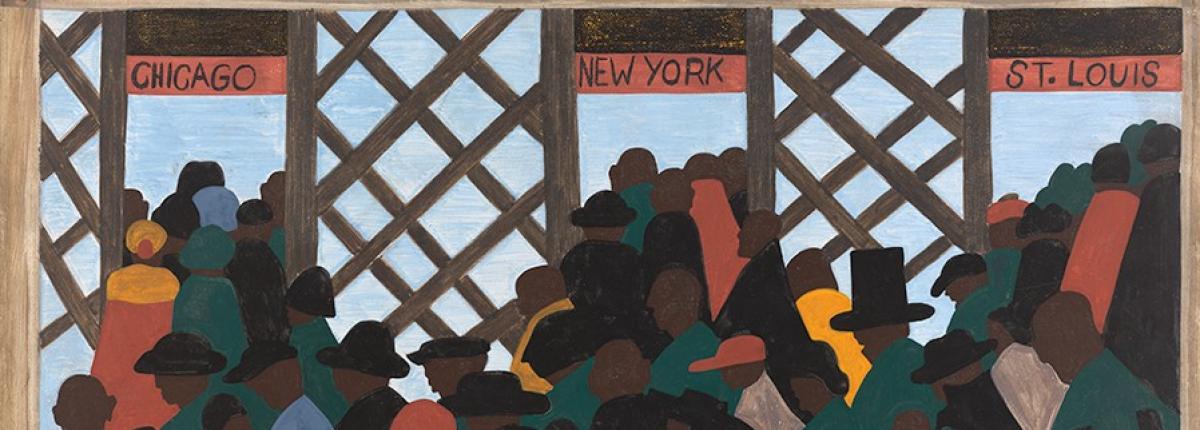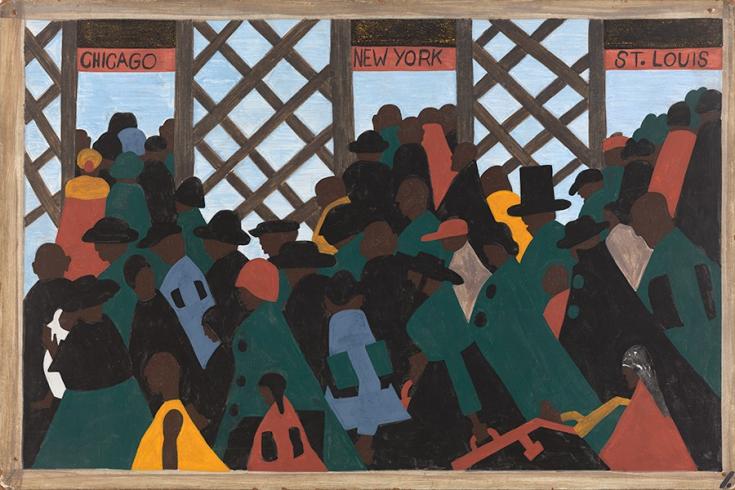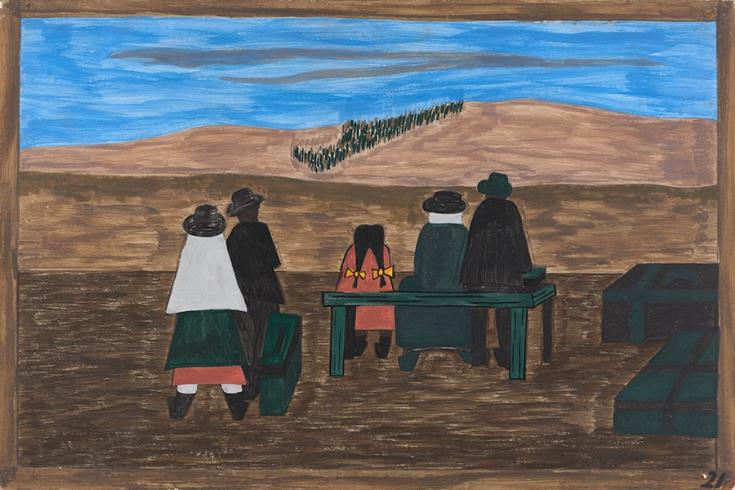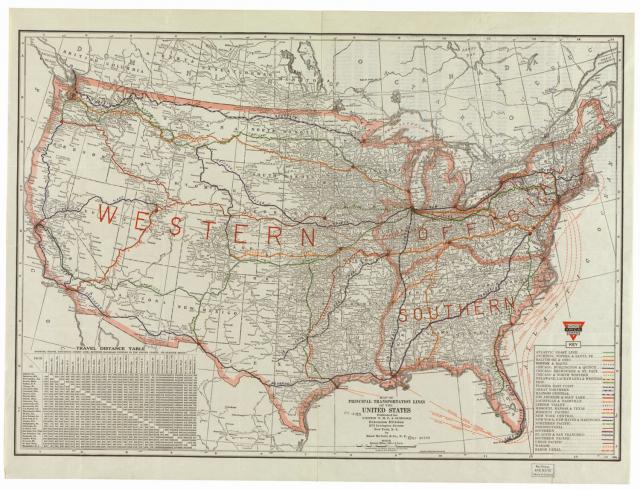The Great Migration: Traveling the Distance

Part 1: What was the Great Migration?
Introduce:
- Explain to students that they will be learning about a period of time from 1916 to 1940 when hundreds of thousands of African Americans moved from the South to the North in search of a better life. This period was known as the Great Migration.
- Study Panel no. 1 from The Migration Series. As you’re looking at the panel, use the Think/Puzzle/Explore thinking routine:
- What do you think you know about this artwork or topic?
- What questions or puzzles do you have?
- What does the artwork or topic make you want to explore?
- Have students share out their responses.
- Then, watch this short video of Jacob Lawrence’s discussing Panel no. 1.
- As they watch the video, students should jot down the cities to which Lawrence mentions the migrants traveled.
- Explain to students that they will be investigating the different cities to which the migrants traveled and from which states they came. They will also look at the distance traveled from Southern cities to Northern Cities.
Part 2: Studying Data and Maps
Reading Data and Understanding Distance:
- In partners, students will complete The Great Migration: Traveling the Distance worksheet.
- The data shows information between 1920-1970. Discuss that the Great Migration happened in multiple waves. The first wave was from 1916 to 1940 and Jacob Lawrence showed this wave in his Migration Series. The second wave was from 1941 to 1970.
Part 3: Reflection
- After students finish studying the data and maps, remind them that the migrants traveled very far to get to the North. In a writing journal, students should respond to the following prompts:
- Using your imagination and thinking about how far some of the migrants traveled, reflect on what you think the journey may have been like for the migrants.
- Describe why the migrants may have wanted to make such a long trip. What do you think would make someone want to uproot their life and go to a place they have never been?
Additional Context
Lesson Context
Many aspects of the migrants’ experience are represented throughout the 60-panel Migration Series. Jacob Lawrence evokes a sense of the migrants’ hope on their journey north and the realities of their new life in northern cities. Train travel was one of the most widely used modes of transportation from migrants traveling from the South to North. Migrants might have used a train map to plan their trip.
In many panels in the first half of the series, Lawrence addresses reasons for leaving the South. He includes images of failing crops, segregation and discrimination, poverty, and bleak educational opportunities for African Americans. The decision to leave the South was not easy for many. The journey could be long, arduous, and expensive. Yet the desire for a better life drove them to make the journey despite its challenges.
Key Terms
Great Migration: In the Southern US, African Americans endured blatant discrimination and segregation as part of Jim Crow laws, as well as poor economic conditions. In the hopes of improved living and working conditions, hundreds of thousands of African Americans migrated from the South to the North, in particular to Chicago, Los Angeles, Detroit, Philadelphia, and New York. The Great Migration happened in two major waves: the first one being from 1916-1940 and the second one from 1941-1970.


